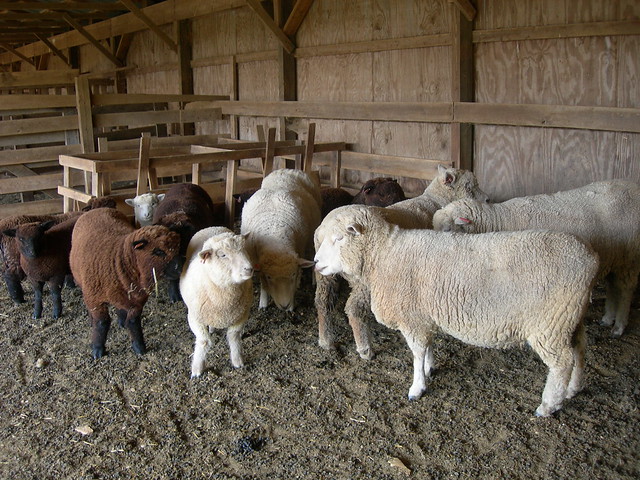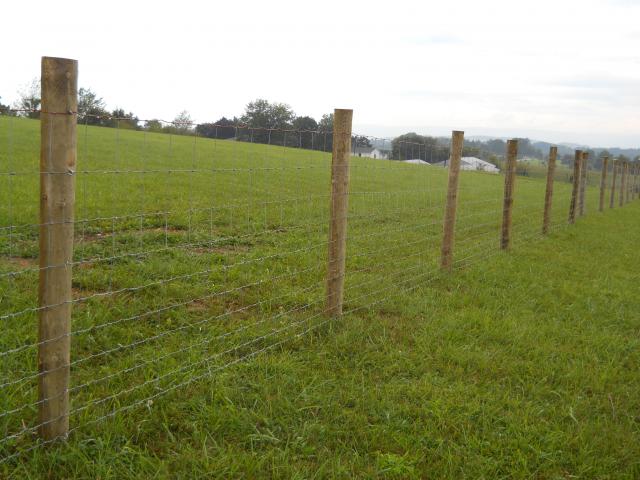
Space
First things first—make sure you have enough space both in your barn and in your pasture/dry lot to accommodate the amount of sheep you want or have. The following chart will give you the minimum space requirements for different types of sheep in various environments.
*Spaces such as catch pens, holding pens, etc.
Source: Midwestern Plan Service, Sheep Housing and Equipment Handbook, 1982
If your sheep are expected to get their nutrients from pasture, you need to make sure your stocking rate is at an acceptable level. One ‘animal unit’ is equal to five ewes and their lambs. It is advised to call your local county extension agent and ask what the stocking rate per acre in terms of animal units is because every location is different. In the winter (and in some places, summer), you will need to feed hay either because of the lack of pasture or the lack of quality pasture available.
The University of Maryland recommends one animal unit per acre in the Mid-Atlantic region.
Fencing
Now that you know how much space your sheep need, you can now put up a fence or improve/expand your current one to fit your needs. There are many types of fencing available in two categories: permanent and temporary. The best permanent fencing for sheep includes 8-strand electric and woven wire (pictured). The best temporary fencing is probably electric netting.
Because fencing is such a huge topic that cannot be covered fully here, you can buy a book (many people recommend Fences for Pasture & Garden) or peruse the internet; many college extension Web sites have excellent articles and publications on fence building.

Barns & Shelter
Many people suggest you only need a barn if you are going to be lambing in the winter. However, barns and other types of shelters are useful for feed and supply storage, as well as allowing sheep to have the option of getting out of the sun, heat, rain, wind, snow, etc. Sheep in full wool will be outside while it’s raining, but may seek out cover in a heavy downpour. Sheep can also be found outside grazing while it’s snowing and they can actually graze through up to one foot of snow.
Regardless of what type of shelter you have, ventilation is key. A warm stuffy barn is going to cause pneumonia in your animals. A cold, well ventilated barn keeps your sheep happy and content and they will warm it up themselves with their body heat and respiration.
My sheep had my deck as their shelter for 2.5 months before being moved out to pasture and having a make-shift ‘sheep shack’ available to them. While the deck was not perfect, it was cool underneath and it provided some cover from rain, though they would still be soaking after a summer thunderstorm. Being only one sided, it was perfectly ventilated and there was no smell of ammonia or manure even though my sheep were on a dry lot and their pens were never cleaned.
As for flooring and bedding—bare dirt is probably the best (pictured). If your sheep have little wool cover in the winter, you can provide straw and they can bed down in it. Sheep in full wool during winter are usually warm enough without straw. In the summer, try not to provide bedding in their loafing/sleeping areas because it will get too hot for them. Never, ever have a wood/plywood floor if you can help it; urine will soak through and rot it out. Concrete is okay for animals but they will need rubber mats on at least part of it.
